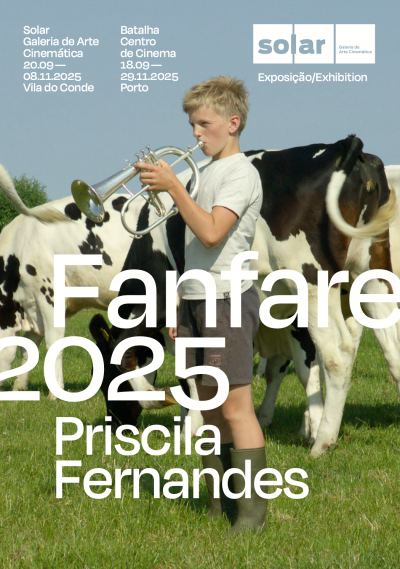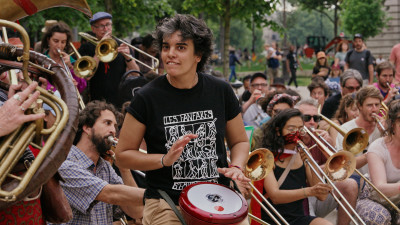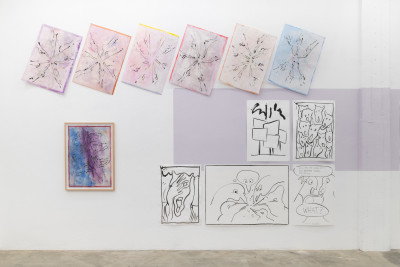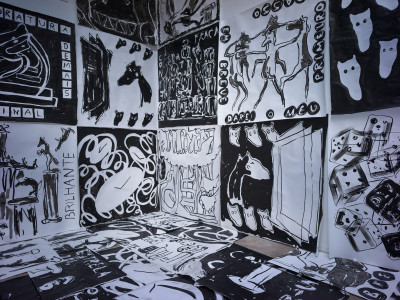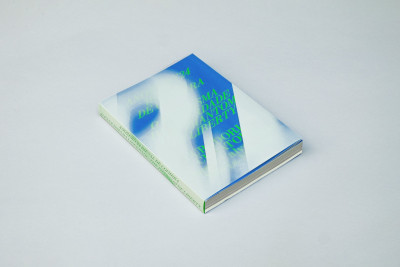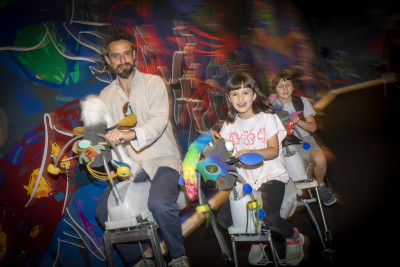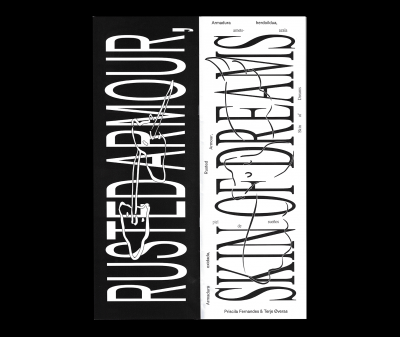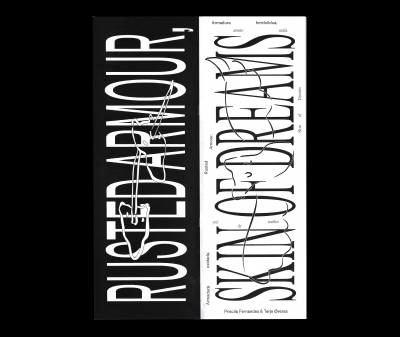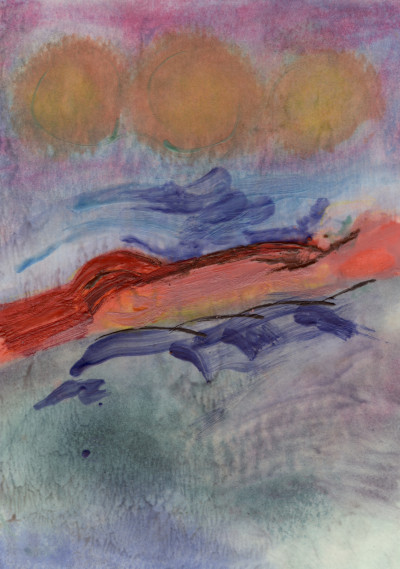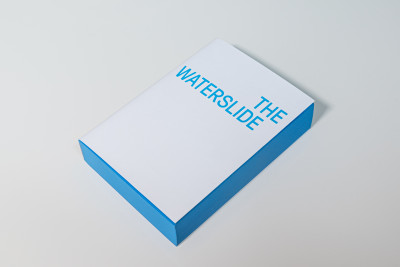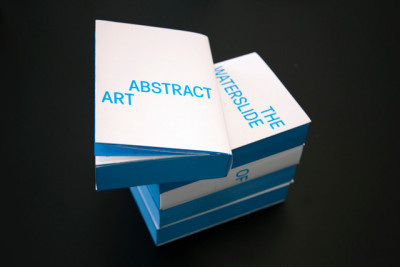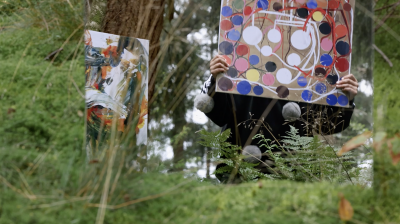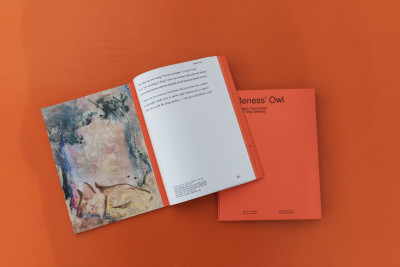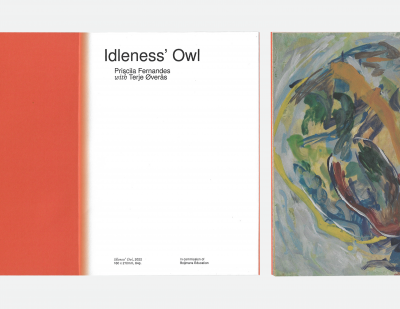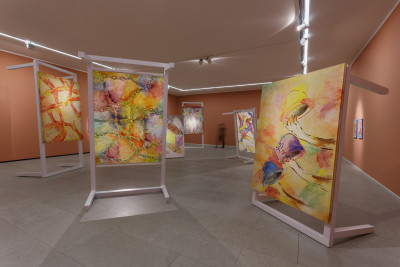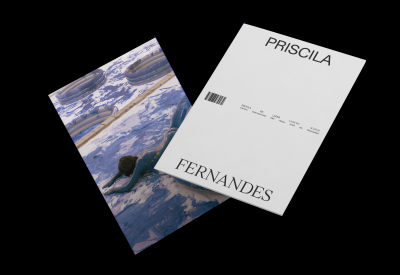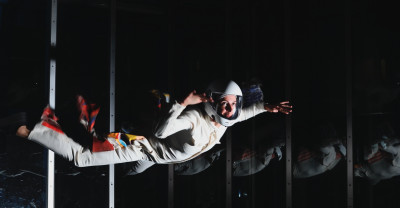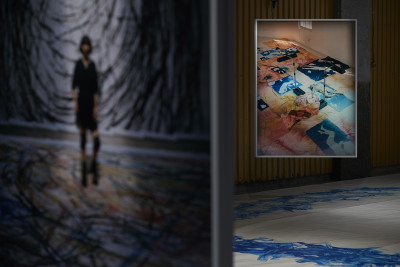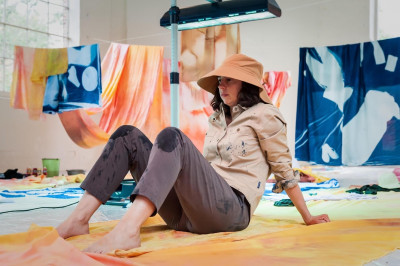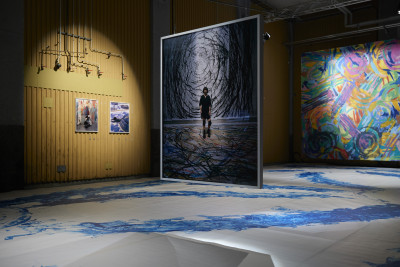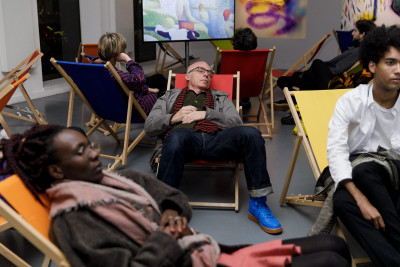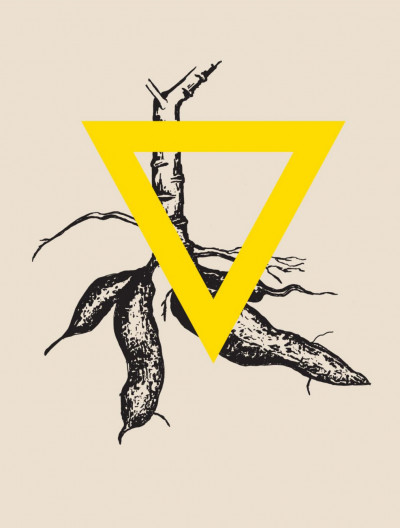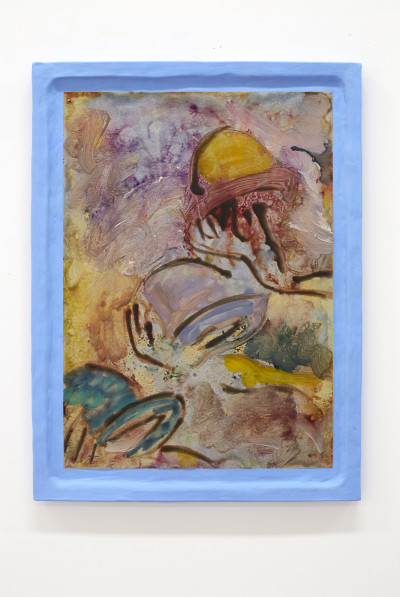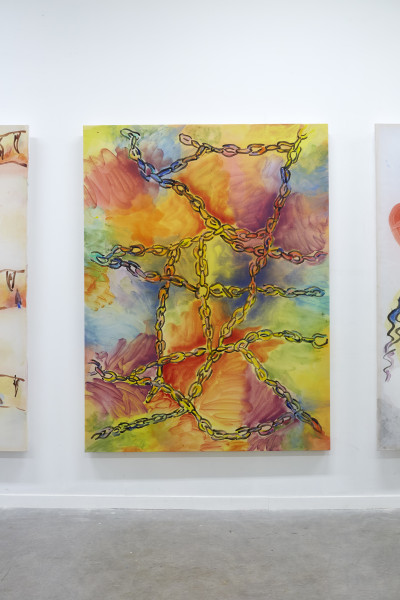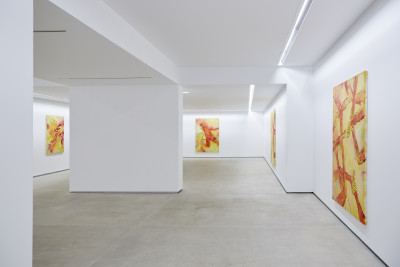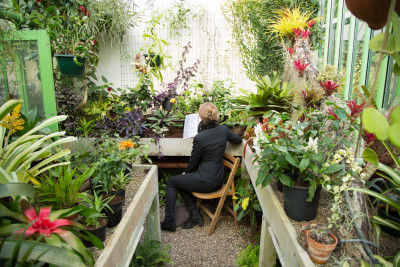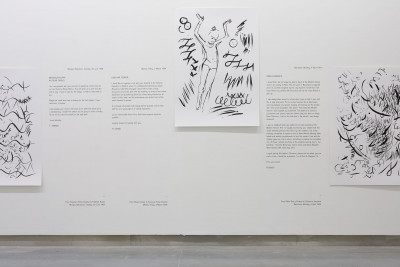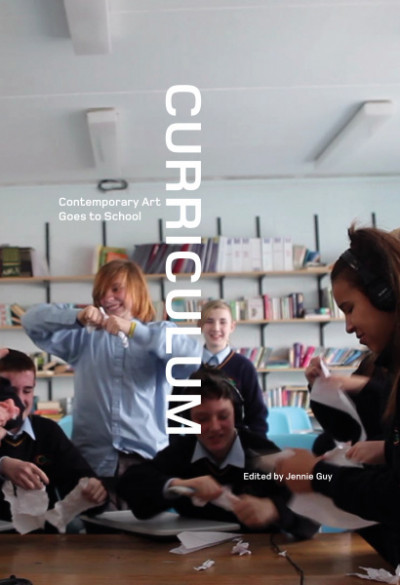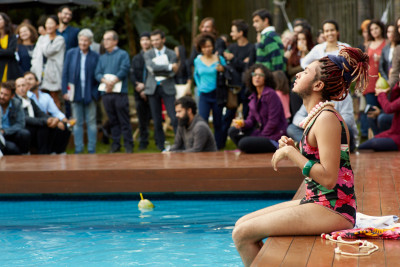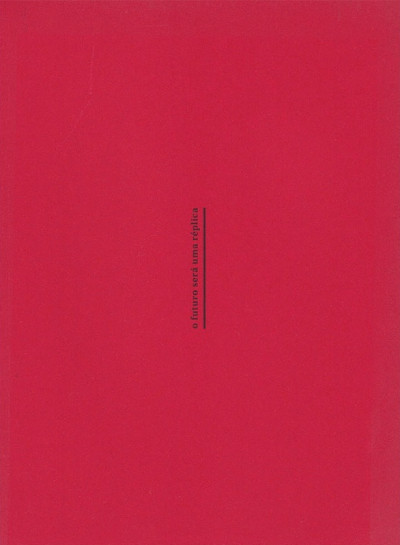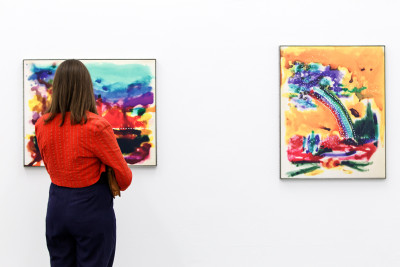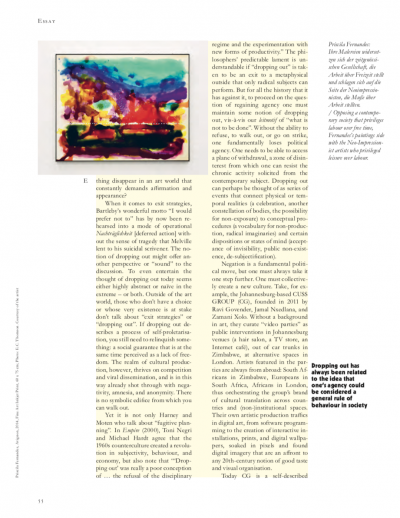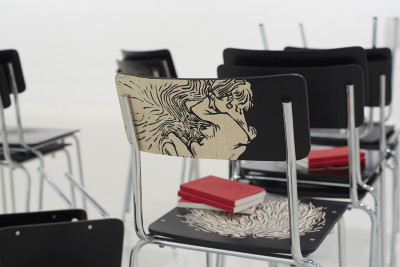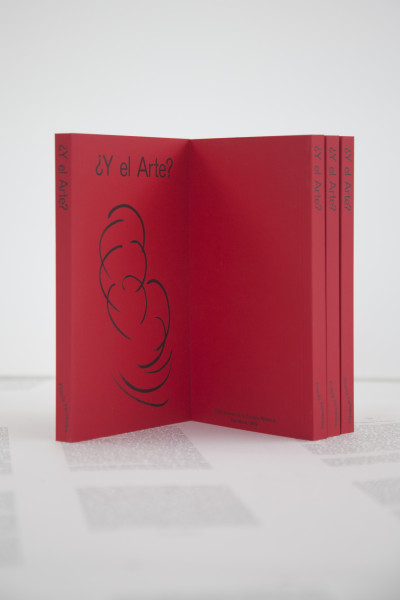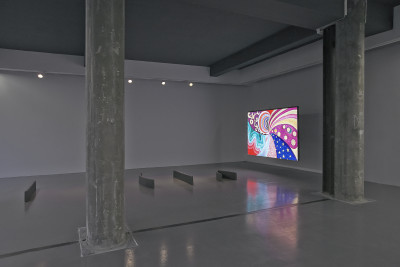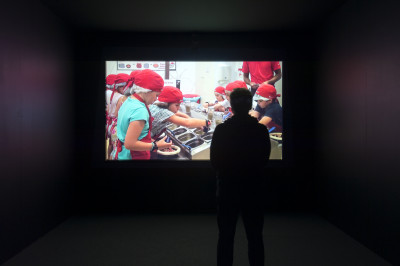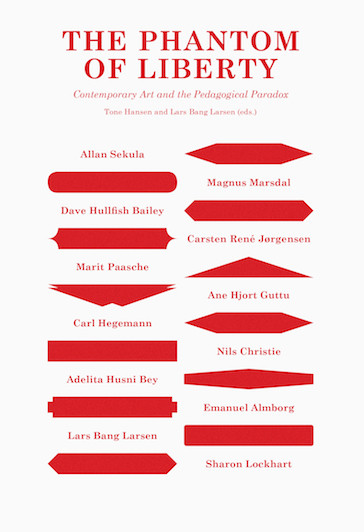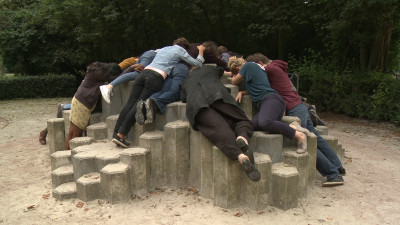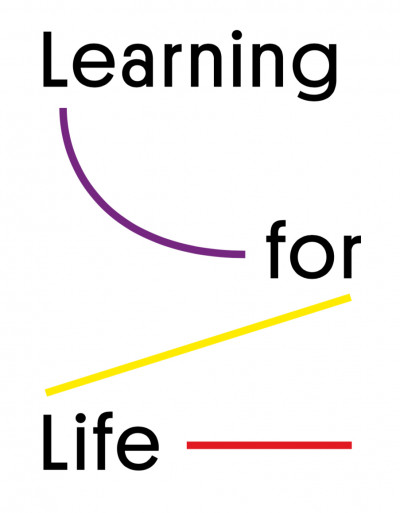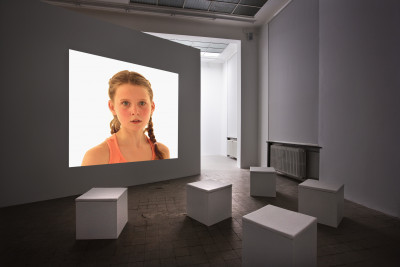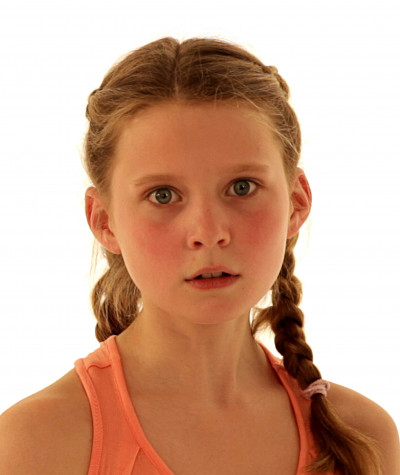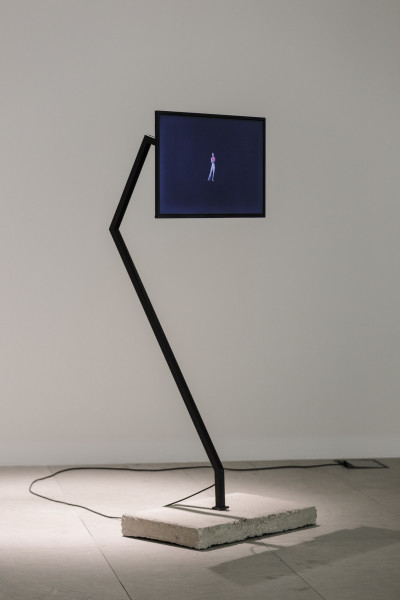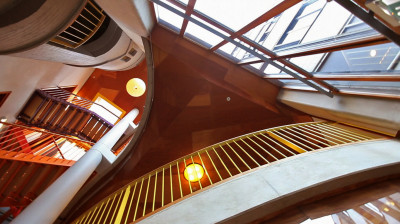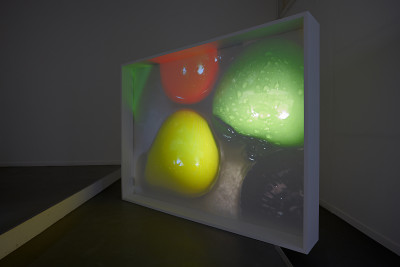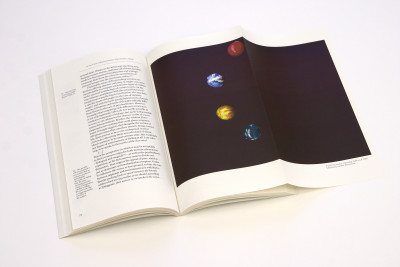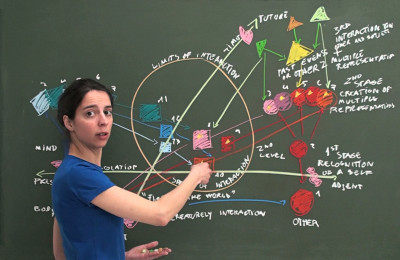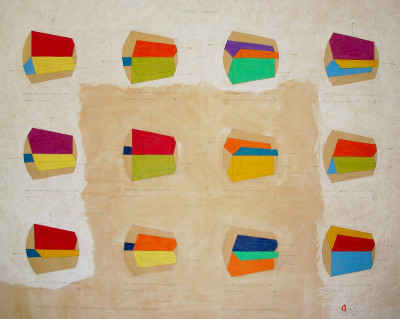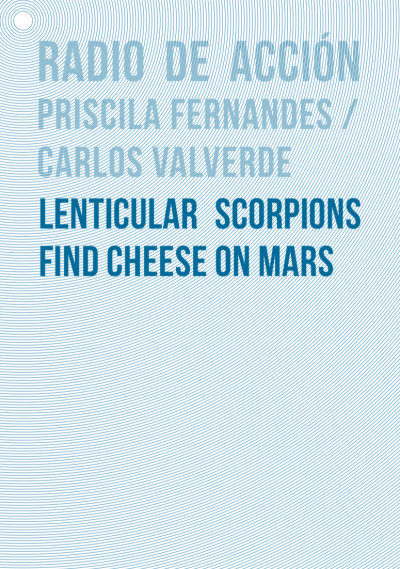Marilia Loureiro
Text from the catalogue of the 32nd Biennial of São Paulo - Incerteza Viva / Live Uncertainty
Published in 2016
By Fundação Bienal de São Paulo
In this 32nd Biennial, the artist presents the installation GOZOLÂNDIA E OUTROS FUTUROS [Cuckoo-land and Other Futures] (2016) that includes three photographic images, a set of furniture and the film Gozolândia [Cuckoo-land] (2016). The images were created by printing negatives that were exposed to light and manipulated through painting, holes or scratches. Their abstraction provides a state of contemplation, often evoking a landscape, such as in Uma vista em fuga [A Vanishing View], or suggesting an action through form, such as the laughter in Ahahah or the splash in O salto, splash [The Jump, Splash]. The tension generated by the bordering relations between work and free time comes to light when contemplating the images and using the furniture: a set of beach chairs that invite the public to take a break. Even though chairs are objects linked to the idea of rest, there is an ambiguity in the spectators' position inside the exhibition space. Whilst looking at the artworks, they are in an oscillating point between contemplation and analysis, distraction and attention, rest and work. The film Gozolândia (2016), commissioned specially for this exhibition, is a reference to Cocanha, a medieval myth about a place of abundant food and fine weather where work was unnecessary. Installed in Ibirapuera Park, Gozolândia articulates the relationships between idleness and abstract art, in an attempt to place side-by-side the developments of this artistic movement and the different forms of leisure from the same time. Leisure as a political tool and as creative process is a relevant concept in this discussion, and Gozolândia raises pertinent questions about 21st century leisure options, including useful (working out), social (the role of the park in the city), contemplative, spiritual and regenerative activities. The history of modern art has many examples of this discussion, from the time of the industrial revolution and Neo-Impressionist painters, to the different schools of abstract art.
However, Fernandes is not trying to pass judgment on the relationship between rest and work. On the contrary, she is aware that both are charged with harmful or beneficial energies, depending on the dominating forces at play. Therefore, thinking about forms of leisure is an analogy to thinking about forms of work: the main issue here is how both have been changing society and the individual.
Associated with the modern art tradition, Priscila Fernandes' work reflects on the impact of industrial and post-industrial contexts on the lives of individuals and their sensorial perception. By using videos, publications, drawings, paintings, performances and sound installations, the artist brings into focus the social disputes and political motivations that are at the core of the aesthetic choices of different modern movements, despite these often being hidden behind formal discussions. Her pieces touch on issues related to workforce procedures, leisure time, the role of education and the creation of habits and values linked to productivity. The debates sparked by Fernandes' work open the way to re-interpretations of art and add different elements to the current artistic production through a prolific combination of historical research and contemporary thought.
READ MORE...
Óscar Faria
Published in 2017
By CINNNAMON Gallery
The description of The Land of Cockaigne from 1567, a later work by Pieter Brueghel in a guidebook at Alte Pinakothek museum in Munich, mentions as follows: “Paradise? The literary source [for this painting] was a story published in 1546 in Antwerp, based on a farce by Hans Sachs [16th century German shoemaker and poet] that decries sloth, gluttony and indolence.”
During the time of the Lutheran Reform a change in style is detectable in Breughel’s paintings. This is identifiable in terms of a greater simplicity in the representation, corresponding with the ideals of the austere life-style proclaimed by Protestantism. Brueghel and Sachs were contemporaries, and a direct influence of a Protestant ethic can be found in both their works.
Inspired by Sachs’ religious and political beliefs, Brueghel, in his painting The Land of Cockaigne, wished to make an image that would contain a moral. On the 52x78 cm panel there are three main figures - a soldier, a peasant farmer and a clerk - who, lying on the ground around the “Cockaigne tree”, appear to be dreaming following a huge feast. This satirical view of idleness is underlined in a preparatory etching for this piece, which is inscribed with, “All you loafers and gluttons always lying about - farmers, soldiers and clerks, who live without work. Here the fences are sausages, the houses are cake, and the fowl fly roasted, ready to eat.”
The Land of Cockaigne is also addressed by situationist Raoul Vaneigem, although with a very distinct ethic. "In The Land of Cockaigne, abundance is natural, kindness is native and harmony is universal. Nothing, from the myth of the golden age of Fourier, has exalted more nobly the dreams of the body and of the earth, the secret and joyous symphonies that compose a reason carefully forewarned about the rationality of laborious tumult, active misery and competitive fantasy.” He adds that “The Land of Plenty erects itself as a project within the subject: everything comes to he who learns to desire without end. ‘Do what you want’ is an emaciated plant that only asks to grow and embellish itself.”
During the transition from the 19th to the 20th century, several French artists portrayed the tension between work and leisure, translated into works such as A Sunday Afternoon on the Island of La Grande Jatte (1886) by Georges Seurat, In the Time of Harmony. The Golden Age is not in the Past, it is in the Future (1893-95) by Paul Signac, Luxury, Calm and Pleasure (1904) by Henri Matisse and even The Bathers (1894-1905) by Paul Cézanne. Impressionism, Divisionism and Fauvism, the movements driving these works, place us before a world that is being transformed by the Industrial Revolution. Movements such as these have been referred to as ‘poetry in painting’, where the call to nature, the last bastion of hope for a glimmer of the lost paradise, is evident.
The ideas of Felix Fénéon (1861-1944) also became popularized at this time. Signac, in 1890, painted a kaleidoscope portrait of this writer, anarchist and art critic. Fénéon famously coined the term neo-impressionism and was the inventor of a new literary genre, “Novels in Three Lines”. A novel by Fénéon: “The marine paintings by Mr. Seurat extend with calm and melancholy and even in the direction of the far off decline of the sky, monotonously they murmur.”
Priscila Fernandes has worked with these sources to produce her installation Gozolândia e Outros Futuros / Cuckoo Land and Other Futures, commissioned for the 32nd Biennial of São Paulo. The project includes a film and a series of photo-paintings, through which the artist reflects on current working conditions, comparing them to Abstract Art, particularly the political and social contexts of this movements’ emergence.
The photographs were produced by Fernandes adding scratches, holes and dyes to the photo negatives, thus allowing this developing process to circumscribe the territory of the image with a festive, carnival and even idle atmosphere.
The artist placed deckchairs in front of the photographic prints, allowing the Biennial visitors rest but also so that they could take their time to enjoy the work. The photographs direct us to the theories of colour - from Johannes Itten to Wassily Kandinsky, from John Peter Russell to Paul Cézanne. There is a visual and verbal happiness in these prints, of which the vorticism “AhAhAh” is exemplary. These creations celebrate, above all, life and its passions, in the Spinozian sense.
Filmed entirely in the Ibirapuera Park in São Paulo and in the cultural institutions located within it - the Museum of Modern Art, Afro Brazil Museum and Biennial Foundation - the film Gozolândia / Cuckoo Land comprises a series of shots that not only evoke idyllic and leisurely periods in life: childhood and old age, but also stories of exploitation: the colonisation of Brazil by the Portuguese, and of competition: “I want success, I want a massive car”, says a body- builder in a scene that intrudes in the frames of great serenity that transpire in the film. Fernandes’ narrative begins with two girls picking candy floss from trees “everything is made of sweets here”, they say. Then ends with a little boy who, after rolling on the grass, says, “Ai! Que preguiça!” (Ah, such laziness!), a quote from the famous novel Macunaíma by Brazilian author Mário de Andrade. When the main character in the novel says this phrase, he doubly underlines his laziness - 'ai' in Tupi (spoken by the indigenous peoples of Brazil) and preguiça in Portuguese both mean “sloth”. Therefore in this project, there is a perspective of others, whose voices so often remain unheard.
The journey we take with Fernandes directs our attention for a few moments toward what leisure insinuates. It is the right to laziness, relaxation and sleep. There will be time for running, yoga, dating, playing and visiting the library. In the fingers walking along the spine of a book the artist can be seen flicking through exhibition catalogues. notably that of the 1949 exhibition at the São Paulo Museum of Modern Art, From Figurative Art to Abstractionism, before returning to a page in a monograph dedicated to Seurat showing his painting Bathers at Asnières (1887). Next is a shot of the Ibirapuera lake, where a young woman is sitting on one of the banks, directly recalling the melancholic and ghostly figure in Seurat’s painting. A temporal arc unites these two characters forever.
Finally, comes a moment where the artist appears wearing a ‘pointillist’ leotard and improvises a dance. She moves circularly, facing the camera, making rhythmic waving gestures with her arms. The motion of her feet expresses a desire to take flight, up towards the treetops and the sky: that absolute freedom, which should also be the intention of art.
In this last moment of her video Priscila Fernandes becomes colour, becomes nature. The artist has finally found her Land of Cockaigne.
READ MORE...
Óscar Faria
Published in 2017
By CINNNAMON Gallery
“Paraíso? A fonte literária é um conto publicado em 1546, em Antuérpia, a partir de uma farsa de Hans Sachs [sapateiro e poeta alemão do século XVI], que censura a preguiça, a gula e a indolência.” É num guia acerca da colecção da Alte Pinakothek, de Munique, que se encontra esta curta explicação acerca de “O País da Cocanha” (1566), obra tardia de Pieter Bruegel. O artista holandês e o escritor alemão foram contemporâneos e neles se pode encontrar a influência directa de uma ética protestante. Em consequência do aparecimento deste movimento religioso, o Protestantismo, é mesmo possível detectar nas pinturas de Bruegel uma mudança de estilo, no sentido de uma maior simplicidade na representação, que corresponde ao ideal de uma vida austera proclamada pela Reforma de Lutero.
Já então, em quinhentos, a arte, a política e a religião cruzavam os seus caminhos: Bruegel, leitor de Sachs, propõe uma pintura que encerra uma moral. No painel de madeira, de 52x78 cm, observam-se sobretudo três personagens – um soldado, um camponês e um clérigo -, que, deitados no chão à volta da “árvore da cocanha”, parecem sonhar, quer estejam de olhos abertos ou fechados, depois de uma bona-chira. Esta sátira da ociosidade é sublinhada numa estampa desta obra, gravada em Antuépia pelo amigo, comerciante de arte e colaborador de Brueghel, Hieronymus Kock, na qual se lê: "Vocês, glutões que não pensam senão em preguiçar - agricultores, soldados, homens de letras que vivem sem trabalhar – aqui as cercas são salsichas e as casas enormes bolos - quanto às galinhas, elas voam já assadas e prontas a serem devoradas.”
O “País da Cocanha” é também abordado pelo situacionista Raoul Vaneigem, embora com uma ética muito distinta: “No País da Cocanha, a abundância é natural, a bondade nativa, a harmonia universal. Nada, do mito da idade de ouro a Fourier, nada exaltou melhor os sonhos do corpo e da terra, as sinfonias secretas e alegres que compunham uma razão cuidadosamente avisada contra a racionalidade do tumulto laborioso, da miséria activa e do fanatismo concorrencial.” E acrescenta: “O País da Cocanha ergue-se enquanto projecto com o propósito: está tudo ao alcance de quem aprende a desejar sem fim. ‘Faz aquilo que queres’ é uma planta ética que apenas espera para crescer e embelezar.”
Na transição do século XIX para o século XX, uma série de artistas franceses retrataram a tensão gerada pelas relações entre trabalho e lazer, traduzido em obras como “Un Dimanche d’éte à l’Ile de la Grande Jatte” (1886), de Georges Seurat, “Au temps d'harmonie. L'âge d'or n'est pas dans le passé, il est dans l'avenir” (1893-1895), de Paul Signac, “Luxe, calme et volupté” (1904), de Henri Matisse e ainda “Les Grandes Baigneuses” (1894-1905), de Paul Cézanne. Impressionismo, Divisionismo e Fauvismo são alguns dos movimentos que podem ser detectados nestas pinturas que nos colocam perante um mundo a ser transformado pela Revolução Industrial. Há quem lhes chame “poemas-em-pintura”, sendo evidente o apelo da natureza, último reduto onde se espera ter um vislumbre do paraíso perdido.
As ideias de Félix Fénéon (1861-1944), anarquista e crítico de arte – é dele o termo neo-impressionismo –, também andavam no ar, tendo Signac pintado um retrato caleidoscópico do escritor, criador de novo um género literário, as “notícias em três linhas.” O seu estilo era precioso: “As marinhas do Sr. Seurat expandem-se calmas e melancólicas, e mesmo na direcção de longínquas quedas de céu, monotonamente, marulham.”
Priscila Fernandes tem vindo a trabalhar com estes materiais. E deles nasceu a instalação “Gozolândia e Outros Futuros”, uma comissão para a 32ª Bienal de São Paulo, onde a obra foi apresentada recentemente. Este trabalho inclui um filme e uma série de foto-pinturas, através dos quais a artista procura reflectir acerca das actuais condições laborais em confronto com as propostas da arte abstracta, nomeadamente os contextos políticos e sociais da sua emergência.
As imagens fotográficas, obtidas através da manipulação dos negativos, antes da sua revelação, através de buracos, arranhões e colorações, permitem circunscrever o território, dir-se-ia festivo, carnavalesco, ocioso mesmo – na instalação original, a artista acrescentou umas espreguiçadeiras diante das pinturas, uma forma não só de proporcionar descanso ao espectador da bienal, mas também a dar-lhe o tempo necessário a fruir os trabalhos -, o qual remete para as teorias da cor – de Johann Itten, a Wassily Kandinsky, passando por John Peter Russell e Paul Cézanne. Há uma alegria visual, verbal – como é o exemplo o vorticista “AhAhAh” -, nestas criações que celebram sobretudo a vida e as suas paixões, no sentido que Espinosa dá a este conceito.
Rodado inteiramente no parque de Ibirapuera e nas instituições culturais que este alberga - Museu de Arte Moderna, Museu Afro-Brasil e Fundação Bienal-, o filme é composto por uma sucessão de planos que evocam não só uma idade idílica – a infância e a velhice, pois são esses os tempos do lazer –, mas também histórias de exploração – a colonização do Brasil pelos portugueses – e de competição: “Quero o sucesso, quero um carrão”, diz um praticante de musculação numa cena que se intromete num filme onde se sucedem quadros de uma grande serenidade.
A narrativa que nos é proposta por Priscila Fernandes inicia-se com duas meninas que colhem algodão doce das árvores – “tudo é guloseima aqui”, dizem – e encerra com um menino que depois de rodar sobre a relva, exclama: “Ai, que preguiça!”, uma citação do célebre romance “Macunaíma”, do escritor brasileiro Mário de Andrade – ao dizer essa frase, a personagem principal, uma espécie de anti-herói que dá nome ao livro, sublinha duplamente a sua condição de ocioso, pois, na língua falada pelos nativos, o som “ai” significa precisamente “preguiça”. Há, pois, neste trabalho um olhar sobre o outro, aquele de quem tantas vezes não se ouve a voz.
No passeio que damos com Priscila Fernandes, o nosso olhar fica preso por instantes em que o ócio se insinua. É o direito à preguiça, ao descanso, ao sono. É ainda esse tempo de correr, praticar ioga, namorar, brincar, ir até à biblioteca. Aí, no lento caminhar dos dedos que percorrem a lombada dos livros, a artista acaba por folhear catálogos de exposições – onde se destaca a exposição de 1949 no MAM “Do Figurativismo ao Abstracionismo”, antes de regressar, pela mão do óleo sobre tela “Une Baignade, Asnières” (1887), encontrada numa monografia dedicada a Seurat, ao lago do Ibirapuera: numa das suas margens, observa-se uma rapariga, evocação directa da figura melancólica e fantasmagórica, que, na pintura do século XIX, sentada na borda do Sena, mergulha as pernas na água. Um arco temporal une estas duas personagens, agora aproximadas para sempre.
Refira-se, por último, o momento em que a artista veste a pintura, cobre o seu corpo com um vestido-pontilhista e efectua uma coreografia – talvez fosse mais correcto dizer uma dança improvisada -, na qual dança, em roda, ao ar livre, num movimento circular, nos quais os pequenos gestos dos braços, em conjugação com a deslocação lateral dos pés, parecem querer apontar um desejo de levantar voo, um ir na direcção da copa das árvores e do céu: essa liberdade absoluta, que deve ser também o desígnio da arte.
Priscila Fernandes, neste derradeiro instante do seu vídeo, devém cor, devém natureza. A artista encontrou, finalmente, o seu País da Cocanha.
READ MORE...

